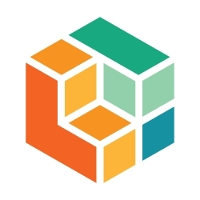In our previous post, we talked about how usability is a critical component for our projects at LookThink. We also reviewed the importance of choosing the right method to help our clients with their project goals. Now, we’ll go over the steps to do just that.
FIRST, determine the scope
Is this “experience” we’re designing big or small? Process-related or conceptual? Are we figuring out what type of product to create, or are we redesigning a particularly troublesome portion of an application?
The size and type of project goals will determine how extensive the usability efforts will be - essentially, how big the scope is. For example, there would be more usability effort involved in bringing a new product to market as opposed to determining the best form structure for an existing experience.
SECOND, determine the constraints
All projects have constraints. For projects that include user research and testing, these are particularly important:
PARTICIPANTS
Think about your project’s target audience and the participants that will be helping with usability. Are they enterprise users or a general audience? Are they local or remote? What is their demographic (education level, age, etc.)? And ultimately, how much time do these users have to spend with you?
As it relates to scope, it’s critical to also consider who is doing the recruiting. Finding suitable users for research and testing can be a challenge for both the enterprise and general audience products. Depending on how broad (or specific) end user target audience is, it may take considerable research and outreach to reach the number of necessary users. Finding users on your own comes with a costly time investment, while using an outside recruiter may have a high price tag.
PROJECT PHASE
Usability is unique in that it can come into play in almost any project phase. Not surprisingly, usability plays a different role in each project phase and changes scope dramatically.
A full soup-to-nuts design and development effort will require a more extensive user research and testing phase than some of our other efforts. For example, if we’re brought in to fix what went wrong in a client’s product launch, then we’ll employ user testing in that product’s post-launch evaluation; this helps project teams determine the gap between expectation and reality and determine where to go from there.
LOGISTICS
All the great plans in the world need to conform to whatever logistical constraints the project or the client imposes, whether they’re overt or tacit. In the end, scope is king.
| If the problem is... | Then the solution is... |
|---|---|
| Any type of personality or political challenges with the client. Perhaps the C-level supports user experience but the mid-level managers think it a waste of time. Or there is a tug of war between Business and Marketing that requires a joint session to confirm user goals. | Get the different sides together in the same room and establish a common understanding of the final goals for this product or project. Determine where usability supports that end goal. |
| Budget. Even with an unlimited budget, you couldn’t do limitless usability testing. |
Design the best usability plan for the project and then use budget constraints to backtrack.
|
| Any physical limitations, such as software, equipment, and facilities. Is it better for users to come to the client site for a structured usability test? Is there a conference room available, or do you have to rent out space somewhere? Do users have the means to conduct a remote online test? | Identify the most ideal situation - then using budget, make concessions. |
| Time constraints. How much time do you have to perform the usability tasks that you want to? | Remember that research and tests can run in parallel to other design and development tasks, but the results of such efforts have to have the time to be included in the project plan. Identify where timelines can overlap, being sure to allow for the results to inform design and development decisions. |
THIRD, Choose methods to match scope, constraints, and logistics
So, now that we’ve determined those 3 items, what are you actually going to DO?
There are a plethora of options in the usability toolkit, but the real guideline is: “use whichever methods allow you to get the data you need.”
| When we hear you say... | We're thinking... | So we may use these methods: |
|---|---|---|
| Why aren't people using my portal? |
|
Competitive Analysis, analytics tools (e.g., heat mapping), user personas, heuristic evaluation, focus groups |
| Why is the call center so busy when the answers are on our site? |
|
Task analysis, content inventory, stakeholder interviews, user and stakeholder interviews |
| Should we even go to market with this product? Do people want it? |
|
Focus groups, user personas, competitive analysis, usability evaluation with prototypes, A/B testing |
| Is this redesign a significant improvement? How do we know? |
|
A/B testing, analytics, surveys, 1:1 user testing |
| We don't know what we need! |
|
User and stakeholder interviews, user personas, competitive analysis, A/B testing, focus groups |
The bottom line is, whichever methods…
- Allow you to get the data you need, AND
- Resolves the questions you need answered within project scope and constraints
Are your way to go.
Good luck!
Thanks to:
Quesenbery, Whitney. “Choosing the right usability technique: Getting the answers you need.” User Friendly 2008 Workshop. Accessed June 15, 2016. http://www.wqusability.com/handouts/righttechnique-uf2008.pdf.
Rohrer, Christina. “When to Use Which User Research Methods.” Nielsen Norman Group. Accessed June 20, 2016. https://www.nngroup.com/articles/which-ux-research-methods/.
Sauro, Jeff. “What UX Methods to Use and When to Use Them.” Measuring U Website. Accessed June 20, 2016.http://www.measuringu.com/blog/method-when.php
Usability.gov. “Methods.” Accessed June 20, 1016. http://www.usability.gov/how-to-and-tools/methods/.
